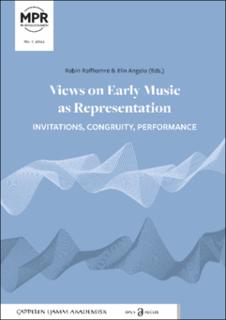| dc.description.abstract | Early music performance in its broadest capacity presents a compelling case of being something in the present that is representing, presenting, enacting, re-enacting, living and re-living, concretising and fantasizing a historical past. It is both what it is and something entirely other. Inspiring countless efforts to come to terms with its nature, one way of approaching the act of conveying or “doing” history is through pedagogy. Pedagogy, here, is multifaceted, as it is placed and displaced in learning, acting, mediating, communicating, perceiving, conveying and persuading historically remote, cultural practices. As such, this anthology includes both explicitly pedagogical chapters and more implicit approaches situated within pedagogical settings. The driving force behind the project is: When maintaining and sustaining a certain European cultural heritage, how do we do so as artists and pedagogues and to what effect? To cast a fresh gaze on traditional Early music performance studies, the authors of this volume argue for the pedagogical potential of such a project. Not only as something functioning as an artefact used within an educational setting, but as something primarily pedagogical also in its formation and re-formation. The way Early music is construed and portrayed just to fulfil the official boundary of its terminology is also a pedagogical act performed in multiple ways. It is not a question of regarding Early music scholarship and artistry as binary presentism versus historicism, but rather as historicism in presentism and presentism in historicism – which is precisely what this volume is all about and to which it seeks to contribute. The anthology’s chapters highlight spectatorship, experience, theory, rhetoric, philosophy, representation, performance, performativity, literature, visual arts, pedagogy, education, pragmatism and also newmaterialism. They examine music that is readily categorised as Early music, as well as music that borders on, or is becoming, something else entirely, but with evident roots in the Early music repertoire. | en_US |

